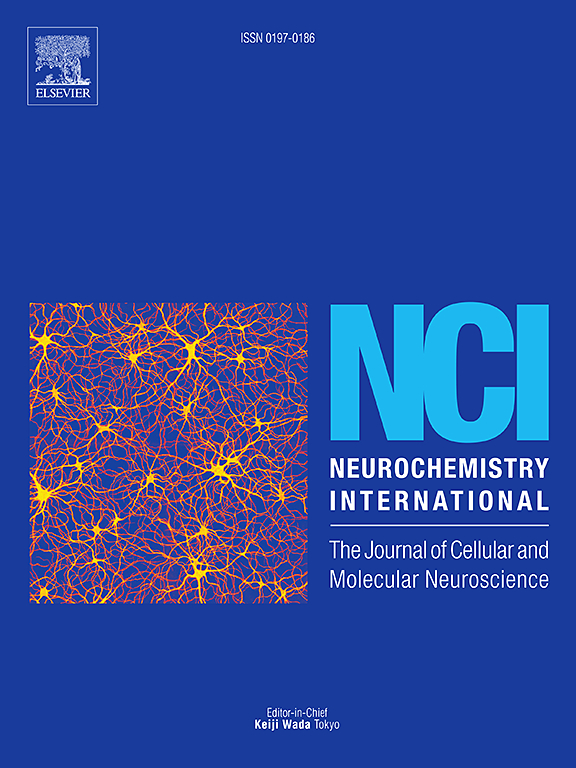Constant light exposure promotes pathogenic tau hyperphosphorylation and phenotypic manifestations in Drosophila disease models
IF 4
3区 医学
Q2 BIOCHEMISTRY & MOLECULAR BIOLOGY
引用次数: 0
Abstract
Chronic sleep disruption caused by constant artificial light exposure has emerged as both a comorbidity and a precursor of several neurodegenerative disorders, including tauopathies. Tauopathies, a group of neurodegenerative disorders, are characterised by the toxic accumulation of hyperphosphorylated tau in brain neurons. While disturbance in the sleep/wake cycle is an inherent clinical feature of tauopathies, the impact of prolonged light exposure on disease progression and severity has been inadequately investigated. We utilized Drosophila models of human tauopathies to examine the impact of uninterrupted exposure to light on tau-induced phenotypic markers during pathogenesis over a short period of aging. We observed that constant light exposure causes an earlier onset and increased severity of disease-associated phenotypes in an age-dependent manner. We further noted that these aggravated phenotypes are associated with increased pathogenic hyperphosphorylation of tau, leading to the rapid accumulation of relatively larger neurotoxic aggregates in neuronal cells and their subsequent degeneration. Overall, our study demonstrates that unhealthy light exposure accelerates the early onset and severity of tauopathy-related phenotypes, highlighting its potential relevance in developing management strategies for these devastating neurodegenerative disorders.

在果蝇疾病模型中,持续的光照可促进致病性tau过度磷酸化和表型表现
由持续的人造光照射引起的慢性睡眠中断已经成为几种神经退行性疾病的合并症和先兆,包括牛头病。tau病是一组神经退行性疾病,其特征是大脑神经元中过度磷酸化的tau的毒性积累。虽然睡眠/觉醒周期紊乱是牛头病的固有临床特征,但长时间光照对疾病进展和严重程度的影响尚未得到充分研究。我们利用人类tau病的果蝇模型来研究在短时间衰老的发病过程中,不间断的光照对tau诱导的表型标记物的影响。我们观察到,持续的光照会导致发病早,并以年龄依赖的方式增加疾病相关表型的严重性。我们进一步注意到,这些加重的表型与tau的致病性过度磷酸化增加有关,导致神经细胞中相对较大的神经毒性聚集体的快速积累及其随后的变性。总的来说,我们的研究表明,不健康的光暴露加速了牛头病相关表型的早期发病和严重程度,强调了它在制定这些破坏性神经退行性疾病的管理策略方面的潜在相关性。
本文章由计算机程序翻译,如有差异,请以英文原文为准。
求助全文
约1分钟内获得全文
求助全文
来源期刊

Neurochemistry international
医学-神经科学
CiteScore
8.40
自引率
2.40%
发文量
128
审稿时长
37 days
期刊介绍:
Neurochemistry International is devoted to the rapid publication of outstanding original articles and timely reviews in neurochemistry. Manuscripts on a broad range of topics will be considered, including molecular and cellular neurochemistry, neuropharmacology and genetic aspects of CNS function, neuroimmunology, metabolism as well as the neurochemistry of neurological and psychiatric disorders of the CNS.
 求助内容:
求助内容: 应助结果提醒方式:
应助结果提醒方式:


